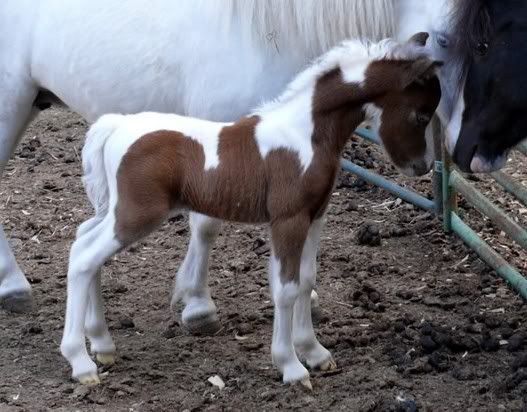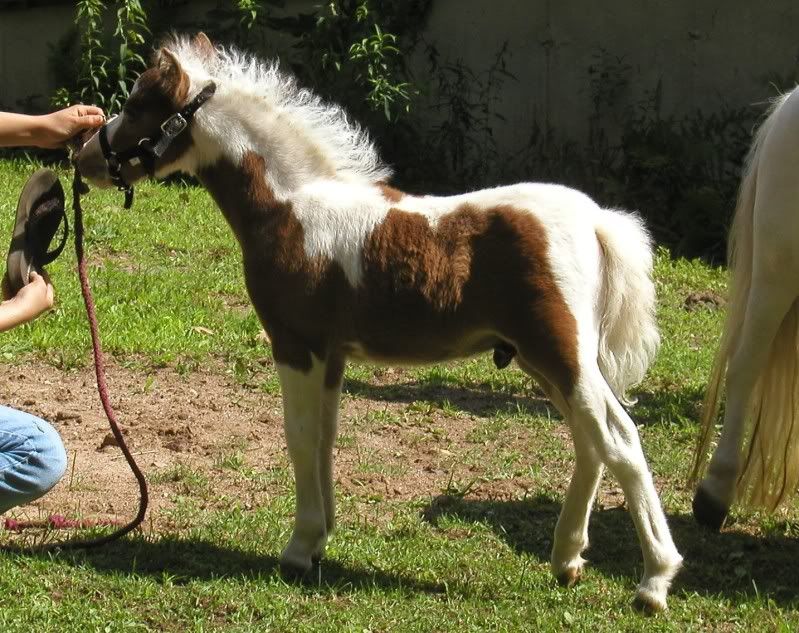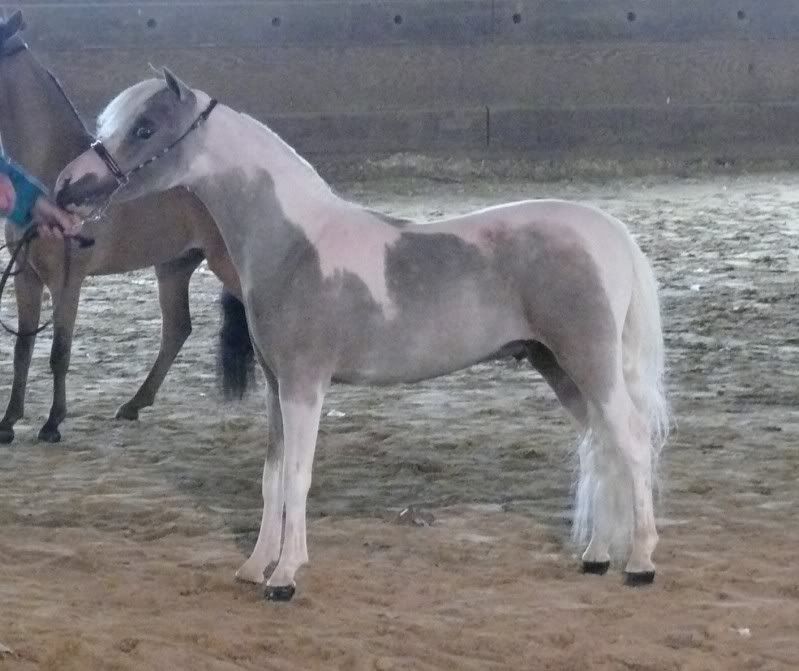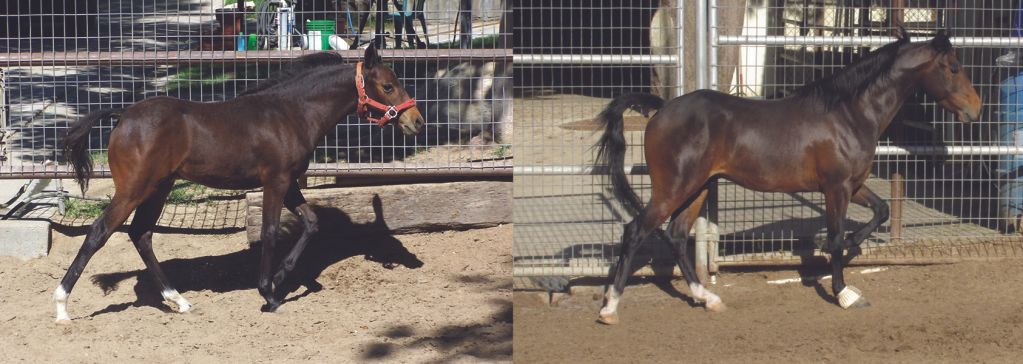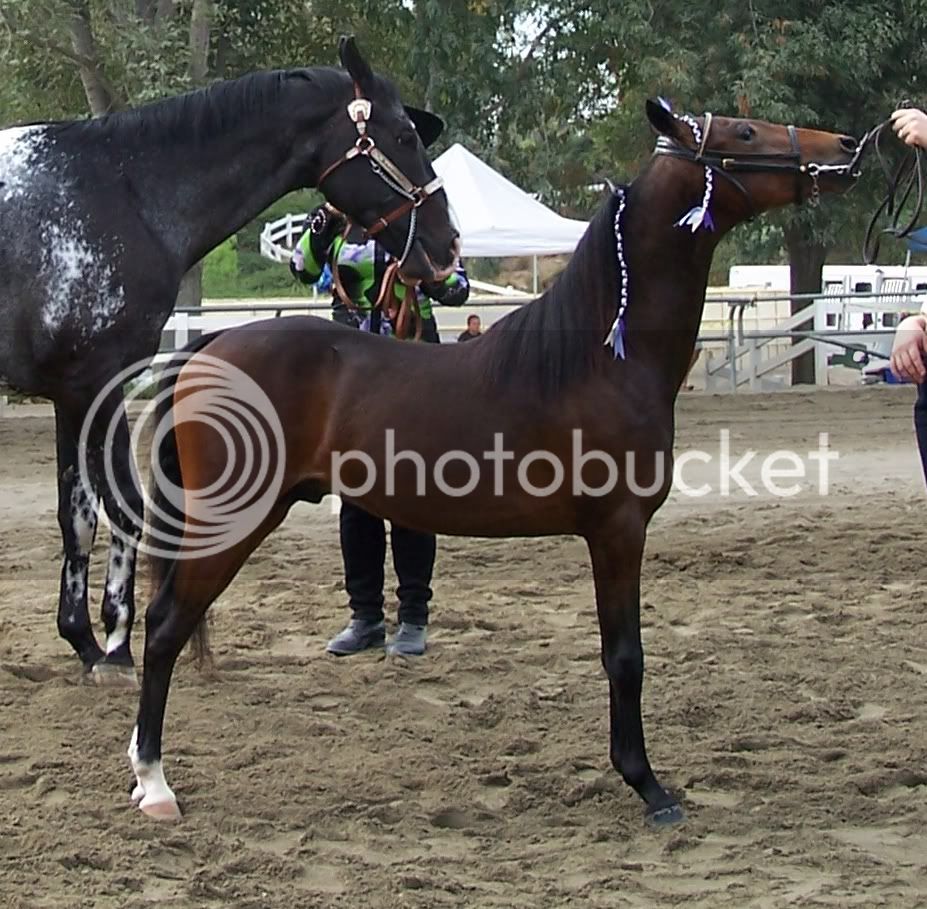Okay, not on my iPhone so I can hop onto PhotoShop really quick here for you... I will use my pony as an example, since I own him (he's also a gelding so I really don't care about his conformational shortcomings!). He is a Modern Shetland, but conformation is conformation because ALL horses regardless of size have pretty much the same skeleton.
Here is how my guy moves:
It is important to note that his CONFORMATION dictates that he moves this way. He doesn't ever wear any chains, bands, etc. etc. and this is him just running free in the arena one day where I video taped him.
Conformation is mandated by the skeletal structure of the horse. Although development of fat and muscle can alter how the horse appears for better or worse, it more or less is unchanged. Here is my gelding at age three months, and three years:
Most of the photos I seem to have of him are stretched out, since that is how the breed is usually shown, but I happened to have this photo which I found (might have others but don't have time to dig through my files) where he is standing somewhat square. Here is the uncluttered photo for you:
And now with some "landmarks" to help your eye see. Note that these "landmarks" might be a tad off, I was trying to go quick in Photoshop. They should be lying where the skeletal bones would dictate. This can be hard for some people to "see." Studying what the horses' skeletons look like will be of great help when learning about conformation.
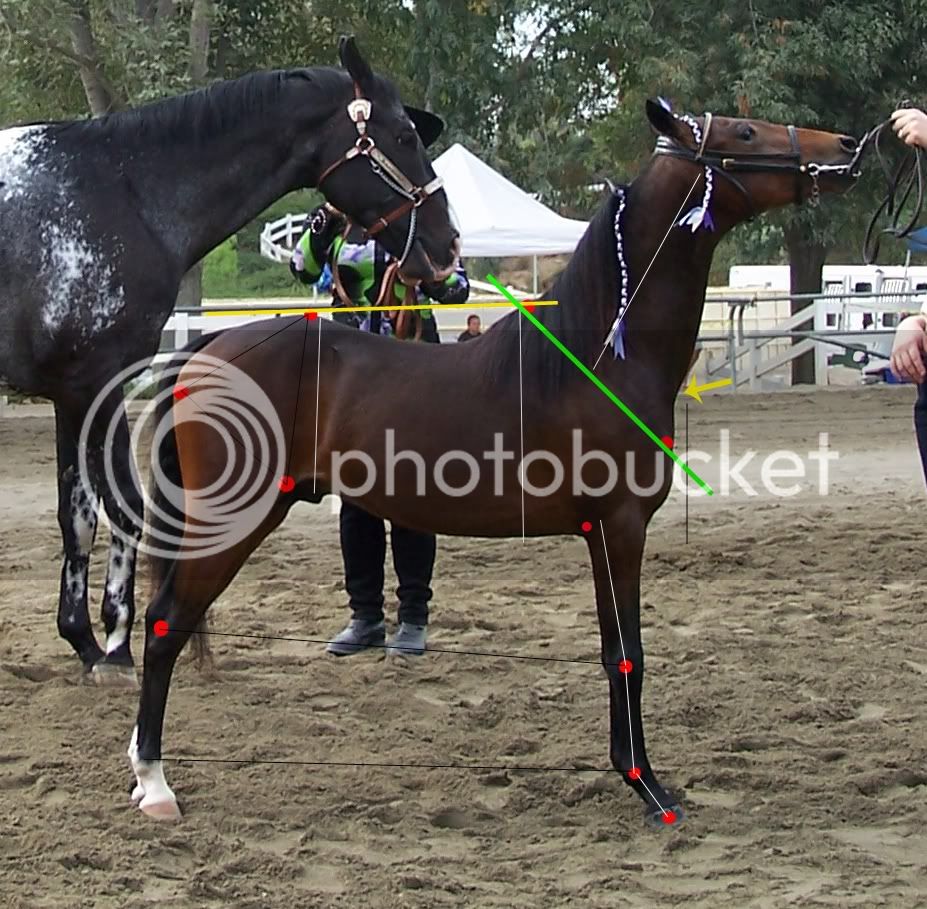
In this photo, you can see the dot above the withers and the top of his butt... and then the corresponding yellow line between them. This is what people generally refer to as the "topline." The yellow line should be level with the ground, this would be considered a "level topline". If the withers are a little bit higher, the horse is considered "uphill" which is generally more desired in an English or Driving type horse than a "downhill" horse where the butt is taller than the withers (common in Western or Stock horses). Minis should have a level topline, or maybe a little uphill. This guy is an American Shetland, and they prefer uphill horses and that is why they are shown parked out... it makes them appear even MORE uphill as the butt drops down when parked out and leaning forward a little. But you can see this guy is a tiny bit uphill even without being fully stretched out.
I do want to point out that he doesn't have what some mini people want called a "tabletop topline"... you can see his back dips down between his withers and his butt. In Modern Shetlands, this "dropped back" allows for bigger front-end motion... but is NOT desired in miniatures. Just want to point that out. However, his tail is set how many minis would like... very high and close to the top of his butt.
The green line on his shoulder kind of goes from the red dot at his withers to the red dot that is the "point" of his shoulder. This is what people are referring to when they are looking at the slope of the shoulder. The green line should be sloped, and not up-and-down. A sloped shoulder will help the foreleg lift up. It will also help that white line (through his neck) be able to raise straight up, too. If the shoulder is "laid back" the horse can lift it's neck up.
When people talk of where the neck comes into the chest, they are referring to where that big yellow arrow is pointing. Many minis do NOT have a good chest here. On my pony, you can see the neck goes into that shoulder, and then I drew that little black line out where you could see it, but there is a length of chest there. Some minis don't have that bit of chest, the neck just blends right down into where the point of shoulder is, and they won't have that open movement out front.
Talking quickly about front legs, you can see that his forearm is longer than his cannon bone, and that he has long pasterns. This helps give him that big front-end movement too.
The white lines on his body kind of divide him into thirds. Ideally, you'd like all three parts to be somewhat equal. If one section is smaller than another, that will determine their overall "balance." If the shoulder is straight-up-and-down they will look weak in the front end. If the middle section is the biggest, the horse is probably too long in the back. If the hip section is the smallest, the horse has a "weak hip". I also drew black lines to make a triangle on this pony's hip... it's not a super great hip like the chestnut pony pictured in the post above, but it's not "bad" or "weak" dramatically.
Lastly, the black lines between his hocks and his knees... this line should be somewhat level... low hocks make for more action. This guy COULD have lower hocks and he'd have even better hock action... but his conformation says it ain't so.
That's all I've got time for, I hope the quick lesson is helpful to anyone.
Thanks,
Andrea




